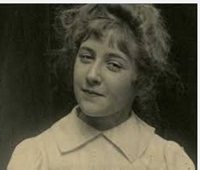 Agatha Christie was president of The Detection Club from 1957 to 1976. Formed in 1930, The Club was a group of British mystery writers who helped one another with technical aspects of their writing and wrote a number of works together.
Agatha Christie was president of The Detection Club from 1957 to 1976. Formed in 1930, The Club was a group of British mystery writers who helped one another with technical aspects of their writing and wrote a number of works together.
Aha . . . an early writing club, or writing group, showing the value of writing with others.
I was curious about the popularity of Agatha’s books, so headed to my computer chair to research, where answers were clicks away, unlike the “good old days” of thumbing through drawers of cards in the library.
The following is excerpted from New Yorker Magazine.
Here’s how the typical mystery novel starts:
Eight or nine people are assembled in a small place: a snowbound train, a girls’ school, an English country house. Then—oh no! A body drops. Who did this? And why, and how? Among those gathered, or soon summoned, is a detective, who says that no one should leave, please. He or she begins questioning the people concerned, one by one. In the end, he collects all the interested parties and delivers the revelation: the murderer, the motive and the method. Anyone who has ever seen a Charlie Chan movie, or played Clue, or read a detective story of the past half century will recognize this scenario, created by Agatha Christie, the Queen of Crime.
Two conventions for detective stories had been established when Agatha began writing them. First was the detective’s eccentricity. Sherlock Holmes, for example, when not chasing a criminal, lies on his couch, felled by boredom and cocaine, shooting bullets into the wall of his study. A second rule was the detective, when working, shows almost no emotion. What he or she does show—and what constitutes the main pleasure of the stories—inductive reasoning.
Agatha generally followed these rules, but she elaborated on them, creating the scenario described above—the small place, the interrogations, the revelation—and used it, fairly consistently, in sixty-six detective novels published between 1920 and 1976.
At the start, she was a clumsy writer. But she was able to offer her readers what they wanted, a whodunnit, also called a “puzzle mystery”—a story that is a contest between the author and the reader as to whether the reader can guess who the culprit is before the end of the book.
Agatha favored a clean conking on the head or—her overwhelming preference—poison. That choice was possibly a product of her war work in the dispensary, with its many shelves of potentially lethal drugs. But poison probably appealed to her also because it did not involve assault. Agatha disliked violence. When, in her novels, someone starts to look dangerous, her detective does not pull a gun. He doesn’t have a gun. Bystanders may wrestle the malefactor to the ground. In one case, where there are no bystanders, the detective squirts soapy water into the murderer’s face. It works.
The murder that sets the plot in motion is rarely shocking. For one thing, readers almost never see it happen. Furthermore, the victim is ordinarily someone with whom we do not sympathize. Often the victim is a rich, nasty old person who enjoys taunting his prospective heirs with the accusation that they wish him dead, so they can collect their inheritances.
This rule—that Christie’s murders do not touch the heart—admits of one curious exception: the murder that the culprit commits, after the main murder, in order to get rid of someone who knows too much. Here the victim is often a nice or in any case blameless person, and readers witness the crime, or its prelude. In “A Murder Is Announced” (1950), Miss Murgatroyd, who knows that Letty Blacklock wasn’t in the dining room when the gun went off, is taking the washing off the line when she hears someone approaching. She turns, and smiles in welcome, obviously to a neighbor. It has started to rain. “Here’s your scarf,” the visitor says. “Shall I put it round your neck?”
Christie created two famous detectives: Hercule Poirot and Jane Marple.
Poirot’s most obvious characteristic is his dandyism. He dyes his hair, smokes thin, black Russian cigarettes, wears pointy patent-leather shoes ill-suited to walking the grounds of the country houses where he must often do his sleuthing. He deplores the English preference for fresh air, thin women, and tea. During interrogations, Poirot exaggerates his foreignness. The person being questioned then takes him less seriously, and in consequence tells him more.
Miss Marple is the opposite of Poirot. She comes from a sleepy village, St. Mary Mead, and she seems a sweetly bewildered old lady. She has china-blue eyes and knits constantly. Nobody thinks anything of her. They should, because she is a steely-minded detective. When she is on a case, she makes it a rule to believe the worst of everyone. She reports with regret that experience has confirmed this point of view.
In John Curran’s book, “Agatha Christie’s Secret Notebooks,” the notebooks are school exercise books in which Agatha worked out her plots. She made lists of possible victims, culprits, and M.O.s. Then she picked the combinations that pleased her.
Marlene’s Musings: There you have it. If you want to be a successful mystery writer, simply make a list of victims, culprits and methods. And then. . . just write!